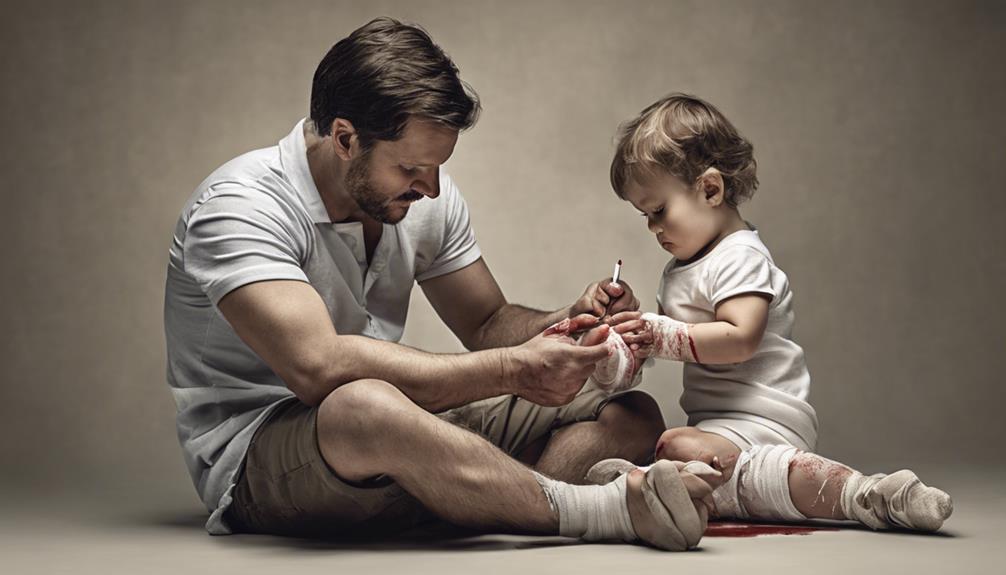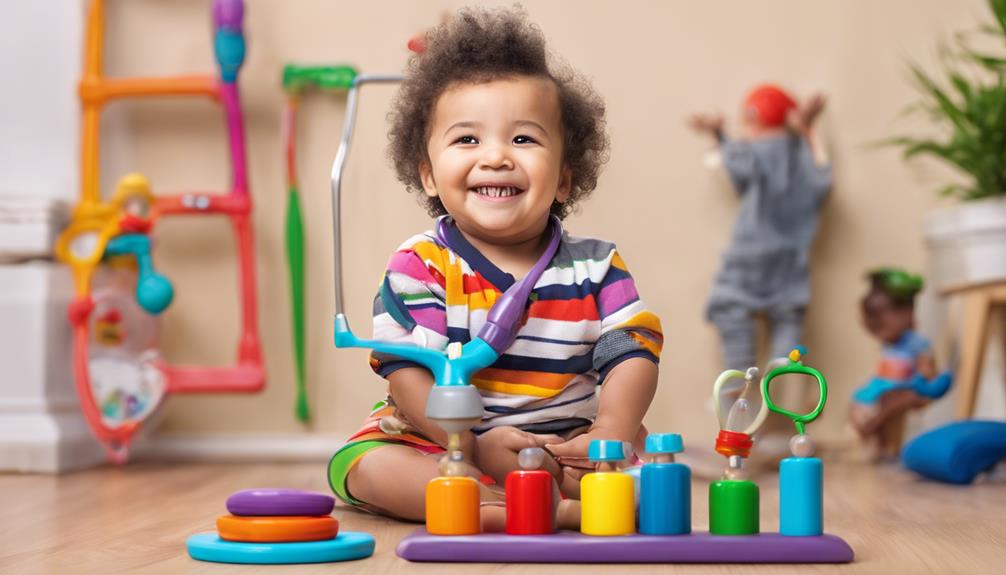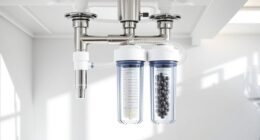So, have you ever wondered how they draw blood at a 2-year check-up? It's a common question many parents have.
The process can seem intimidating, especially when it involves young children. But fear not, understanding the steps and techniques used can help ease any concerns you may have.
Let's explore the methods and tools healthcare professionals use to guarantee a successful and safe blood draw for toddlers during their routine check-ups.
Key Takeaways
- Blood draws at a 2-year check-up use a finger stick or venipuncture method.
- Phlebotomists prioritize gentle techniques and quick, minimally invasive processes for toddlers.
- Comforting strategies like distractions and rewards help children during the blood draw.
- Post-blood draw care involves monitoring for infection, bruising, and following healthcare provider instructions.
Blood Draw Process Overview
When it comes to the blood draw process at a 2-year check-up, it typically involves either a finger stick or venipuncture to collect blood for testing. A finger stick is a quick and easy way to collect a small blood sample using a lancet on the fingertip.
On the other hand, venipuncture requires drawing blood from a vein in the inner arm for more extensive testing. Throughout the blood draw, child cooperation plays an important role in ensuring a smooth and efficient process.
The duration of the entire procedure usually ranges from 5 to 10 minutes, depending on the method used and how well the child is able to cooperate. It's important for healthcare providers to create a comfortable and reassuring environment to help children feel at ease during the blood draw.
Tools Used for Toddler Blood Draws

To guarantee a smooth and gentle blood draw process for toddlers during a 2-year check-up, phlebotomists typically utilize a small, disposable device called a lancet for a finger stick procedure. When it comes to drawing blood from a child, especially a toddler, the finger stick method using a lancet is often preferred.
This approach involves pricking the child's fingertip with the lancet to collect a small blood sample quickly and with minimal discomfort. Finger stick blood draws are commonly chosen for toddlers due to the importance of access and the relatively painless nature of the procedure.
It's important for healthcare professionals to employ proper technique and a gentle approach when using a lancet for blood draws on toddlers. By ensuring a steady hand and a caring demeanor, phlebotomists can make the experience as stress-free as possible for both the child and their caregiver.
Techniques for Drawing Blood Safely

Utilizing precise and gentle techniques is essential for ensuring a safe and comfortable blood draw experience for toddlers during their 2-year check-up.
When it comes to drawing blood from toddlers, especially for routine screenings and tests like blood tests, healthcare providers often opt for the finger stick method. This technique involves a quick and minimally invasive process of pricking the child's fingertip to collect a small blood sample.
The finger stick method is particularly suitable for young children, as it's less intimidating and causes minimal discomfort. Healthcare professionals prioritize the safety and efficiency of the blood draw process to make it as smooth as possible for the child.
Tips for Comforting Your Child

Comforting your child during a blood draw is essential for ensuring a positive experience and reducing any anxiety or fear they may feel. At the age of two, children may find medical procedures like blood draws unsettling. To help ease their worries, consider the following tips:
- Hold Your Child's Hand: Physical touch can provide a sense of security and comfort for your child during the blood draw.
- Offer Distraction Techniques: Engage your child with toys, music, or conversation to divert their attention away from the procedure.
- Provide Encouragement and Rewards: Praise your child for their bravery and offer a small treat or reward after the blood test to create a positive association with the experience.
Post-Blood Draw Care for Toddlers

After your toddler has had a blood draw at their 2-year check-up, it's important to pay attention to the site for any signs of infection or unusual bruising. The nurse will have stopped any bleeding and placed a band-aid on the site to protect it.
While your little one can go back to their regular activities, they might feel some soreness at the draw site for a day or so. Following the post-blood draw care instructions provided by the healthcare provider is essential for proper healing. Keep a close eye on the draw site for any signs of infection, excessive bleeding, or strange bruising.
If you notice anything concerning or if your child experiences unusual symptoms after the blood draw, don't hesitate to reach out to the healthcare provider for guidance and support. Your vigilance and care play a key role in ensuring your toddler's well-being post-blood draw.
Frequently Asked Questions
How Do They Take Blood From a 2 Year Old?
We gently draw blood from a 2-year-old using a heel stick or arm draw method. Proper preparation is key, with a focus on hand hygiene and parental presence for comfort. We limit attempts to 2 for the child's well-being.
How Do I Prepare My 2 Year Old for a Blood Test?
How do we prepare our 2-year-old for a blood test? We talk about it gently, keep them hydrated, bring comfort items, praise their bravery, and offer distractions. It's all about making them feel safe and supported.
What Happens at a 2 Year Check Up?
At a 2-year checkup, we measure height, weight, and head circumference, screen for lead exposure, anemia, and more. We assess teeth, development, milestones, nutrition, and habits. Observing language, motor skills, and independence are crucial parts of the checkup.
Why Is It Difficult to Draw Blood From Children?
Drawing blood from children is challenging due to their smaller, fragile veins. Finding a suitable vein and ensuring accuracy can be tough. Anxious kids may squirm, making it harder. Skilled professionals are essential for a successful and gentle experience.
Conclusion
We hope this article has helped ease any concerns about blood draws for toddlers. Did you know that approximately 90% of toddlers experience little to no pain during a blood draw?
Remember, staying calm and providing comfort to your child can make the process easier for both of you. Keep reassuring them and offering distractions to help them through it. Your support makes all the difference.









